Buffalo treehopper (Ceresa bubalus) – pest management
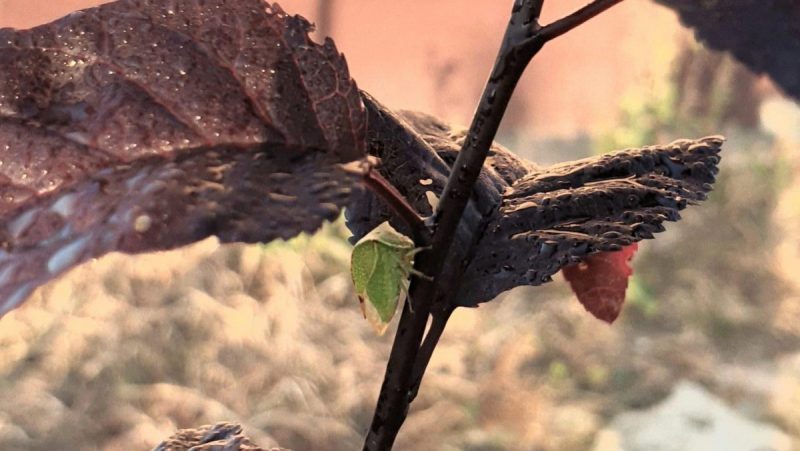
The buffalo treehopper, Ceresa bubalus, is a species of leafhopper native to North America. It causes significant damage, especially in young orchards and seedbeds.
Description and biology. The adult has a bright green or dark gray color. It has a length of 8-10 mm, and the female is larger than the male. The wings are transparent, green, and the hind limbs are well developed for jumping. The mating season is in summer when males produce characteristic sounds to attract females, who perceive the vibrations of sound transmitted through the host plants.
The eggs have a whitish color and the size of 2-2.2 mm. They are laid in autumn, in the bark notches of young branches (made by the females with the help of the saw-shaped ovipositor). They overwinter in the egg stage, and by the end of spring, they hatch.
The larvae have a white color and a thorny appearance, they fall from the host plants and move on the ground, where they feed on grassy plants and weeds. If they do not find food around the trees, they will die. The larval stage lasts 70 days, after which, in June, the adults appear.
The attack of buffalo treehopper is determined by the cracking and detaching of the bark, in general, on the young branches.
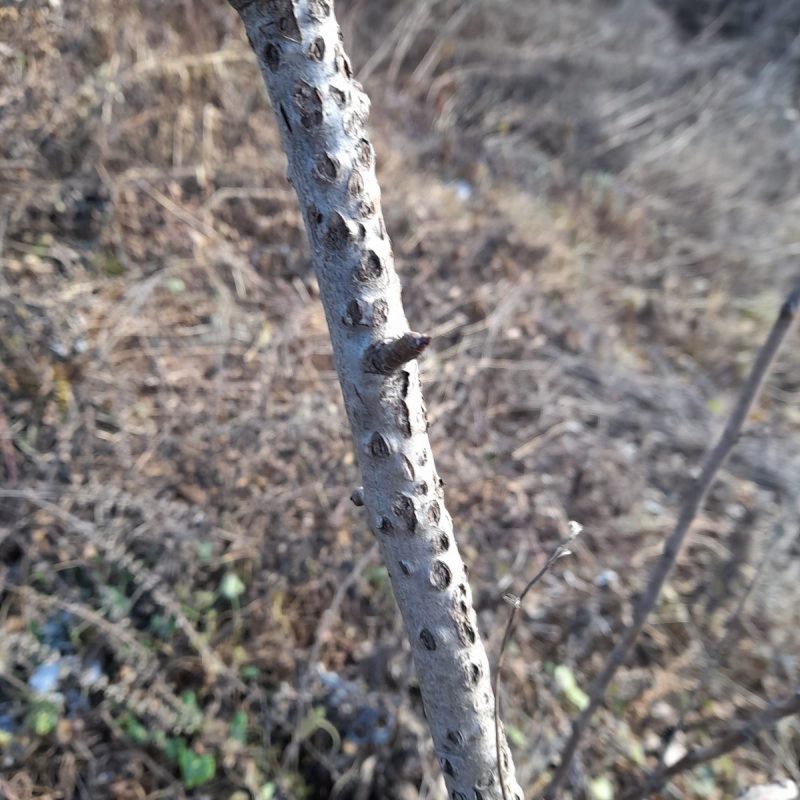
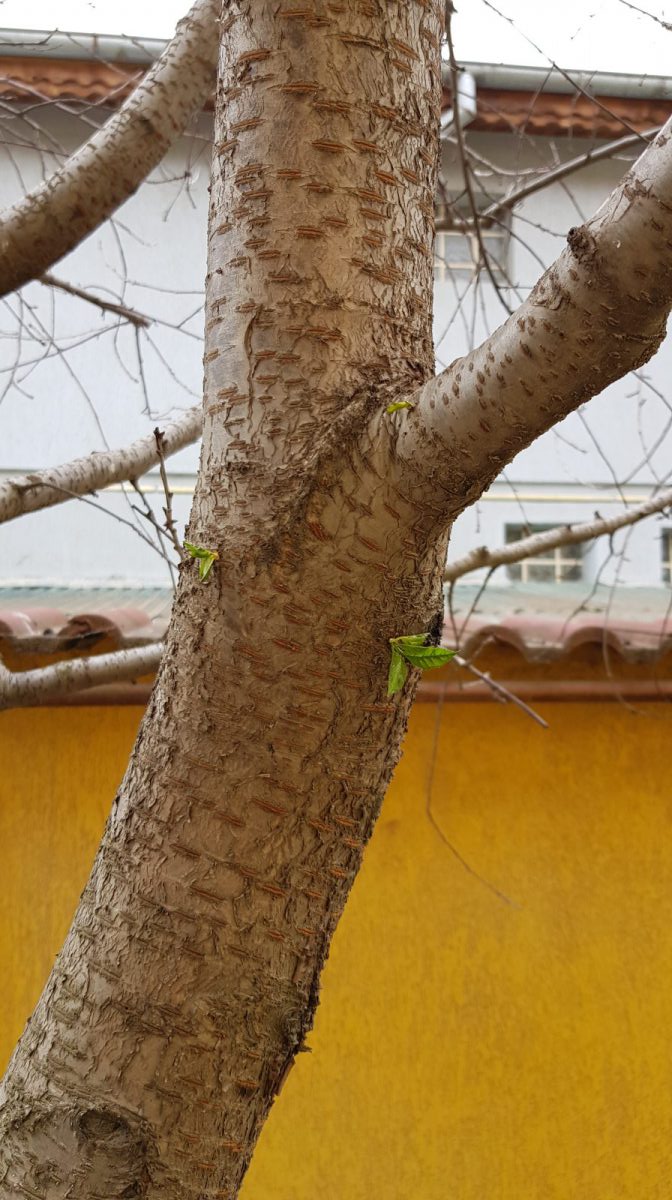
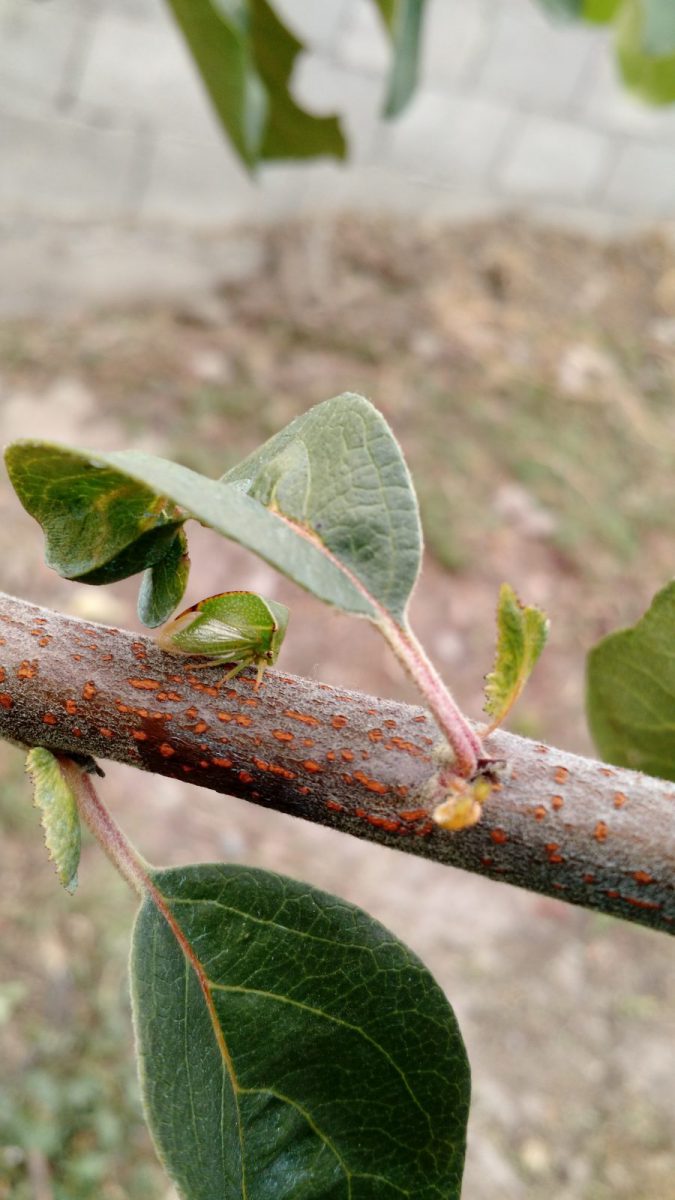
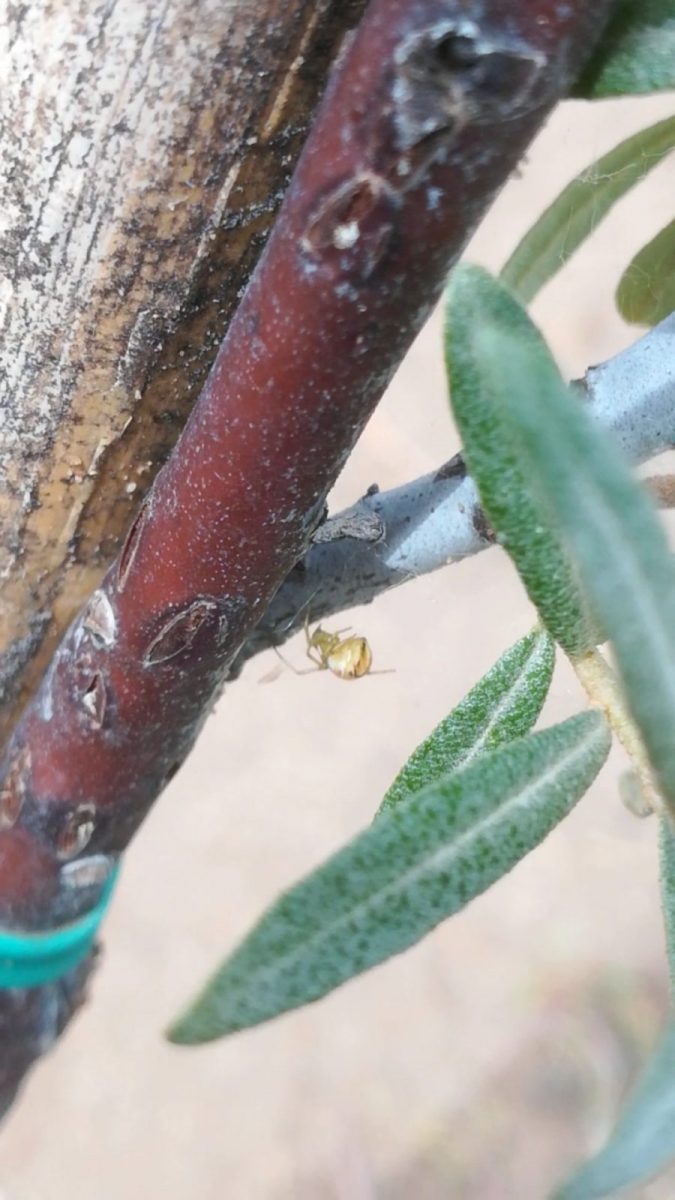
Damage. The incisions in the bark of the branches (made by the females) affect the phloem of the trees and interrupt the circulation of the sap. The attacked branches bear little fruit, the production being thus affected, and in the case of severe infestation, they can dry out. At the same time, the resulting wounds allow the penetration of pathogens into the plant. Both the larvae and the adults feed on the leaves of many species of fruit trees, herbaceous plants, potatoes, or ornamental plants. Within two months, a female can lay up to 80-100 eggs.
Pest management. Leafhoppers can be effectively controlled by taking measures to prevent infestation and applying treatments with proper insecticides.
Preventive measures:
- cutting and burning the affected parts;
- checking the planting material;
- weed control between row crops;
- monitoring the affected orchards and establishing the larval hatching period;
- application of larval control treatments;
- carrying out winter treatments with horticultural oil.
Recommended products
-
You can find products on a different store
Change Store -
You can find products on a different store
Change Store -
You can find products on a different store
Change Store -
You can find products on a different store
Change Store -
You can find products on a different store
Change Store -
You can find products on a different store
Change Store -
You can find products on a different store
Change Store -
You can find products on a different store
Change Store -
You can find products on a different store
Change Store -
You can find products on a different store
Change Store -
You can find products on a different store
Change Store -
You can find products on a different store
Change Store -
You can find products on a different store
Change Store -
You can find products on a different store
Change Store -
You can find products on a different store
Change Store -
You can find products on a different store
Change Store -
You can find products on a different store
Change Store -
You can find products on a different store
Change Store -
You can find products on a different store
Change Store -
You can find products on a different store
Change Store -
You can find products on a different store
Change Store -
You can find products on a different store
Change Store -
You can find products on a different store
Change Store -
You can find products on a different store
Change Store
Chemical treatments against the buffalo treehopper can be made with insecticides with a broad spectrum (depending on the crop) when the larvae appear. It is also very important to add an adjuvant in the prepared solution.
Recommended products
-
You can find products on a different store
Change Store -
You can find products on a different store
Change Store -
You can find products on a different store
Change Store -
You can find products on a different store
Change Store -
You can find products on a different store
Change Store -
You can find products on a different store
Change Store -
You can find products on a different store
Change Store -
You can find products on a different store
Change Store -
You can find products on a different store
Change Store -
You can find products on a different store
Change Store -
You can find products on a different store
Change Store -
You can find products on a different store
Change Store -
You can find products on a different store
Change Store -
You can find products on a different store
Change Store -
You can find products on a different store
Change Store -
You can find products on a different store
Change Store -
You can find products on a different store
Change Store -
You can find products on a different store
Change Store -
You can find products on a different store
Change Store -
You can find products on a different store
Change Store -
You can find products on a different store
Change Store -
You can find products on a different store
Change Store -
You can find products on a different store
Change Store -
You can find products on a different store
Change Store















































































































































































































































































































































































































































